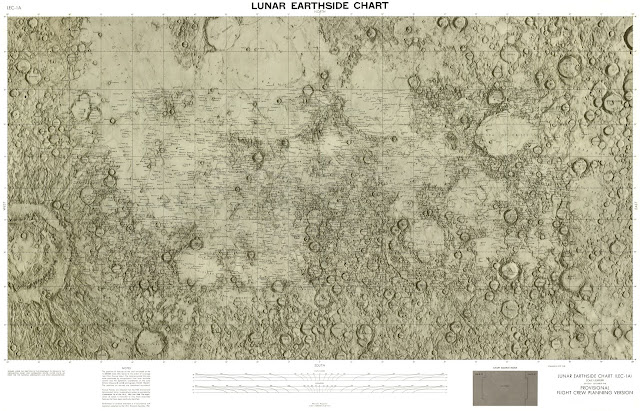Lunar Photography and studying the moon
Introduction
The primary role for this page is to
understand exactly what it is I have taken photos of. Whilst in a remote
location, I really had no idea how to use the equipment I had, but knew
that certain targets would be easier than others. Having little
confidence in polar alignment where there is no star, I focused on
targets like the moon which were bright and easy to find. The focus at
the time was to learn how to use the software (Icap, Registax, Pipp and
Autostakkert), record the AVI's and start to learn my way around the
moon. I also found that many of my early shots were blurred or so
processed that I did not like the overall image. I discovered that if I
took many AVI's that covered a large area, I could arrange them as a
mosiac and therefore increase the resolution of the final image. Many
were taken with a 2/3x Barlow lens using the SKYRIS 132c Celestron
camera.
post #2 09/01/21
Found a great resource for vintage lunar maps at the below address. All in the public domain and high resolution; Great way to get to know the Lunar surface.
https://www.lpi.usra.edu/resources/mapcatalog/
Post #1 7/09/20
The image above was a focus on Clavius Crater, a round crater with two 'eyes' on the rim and a spattering of smaller craters in the interior. Looks similar to the smiley face in the 'Watchmen'. It lies to the right of the terminator and out of it's shadow. The area of the is image is known as the South-West Quadrant, lying in the southern hemisphere to the left (this photo is essentially upside down). The two dark areas are Mare Nubium (center) and Mare Humorum (right) and the beginnings of Mare Cognitum linking the two together.
Clavius; surrounding craters from top clockwise; Biancanus, Scheiner, Longomontanus and Maginus. The most noticeable crater is Tycho, and there is even a ray (white lines cutting across Mare Nubium) leading up to the crater. In a full moon this draws out Tycho to attention and demonstrates that it is a recent impact. Please see image 4 below for a close up.
The terraced crater to the bottom is Copernicus crater, lying to the south of Mare Imbrium and east (west in this 'mirrored' image) of Oceanus Procellarum. The crater to the north is Eratosthenes and is connected to the mountain ranges Montes Apenninus.
Tycho Crater and some of the rays over a cratered lunar surface. Clavius lies to the south and is missing part of its crater wall from the mosaic.
Quarter moon mosiac showing a number of the Mare of the Eastern Quadrants, including Mare Tranquillitatis, Crisium and Serenitatis.













Comments
Post a Comment